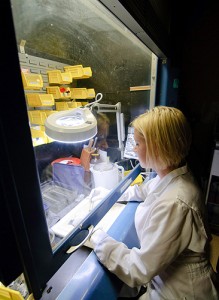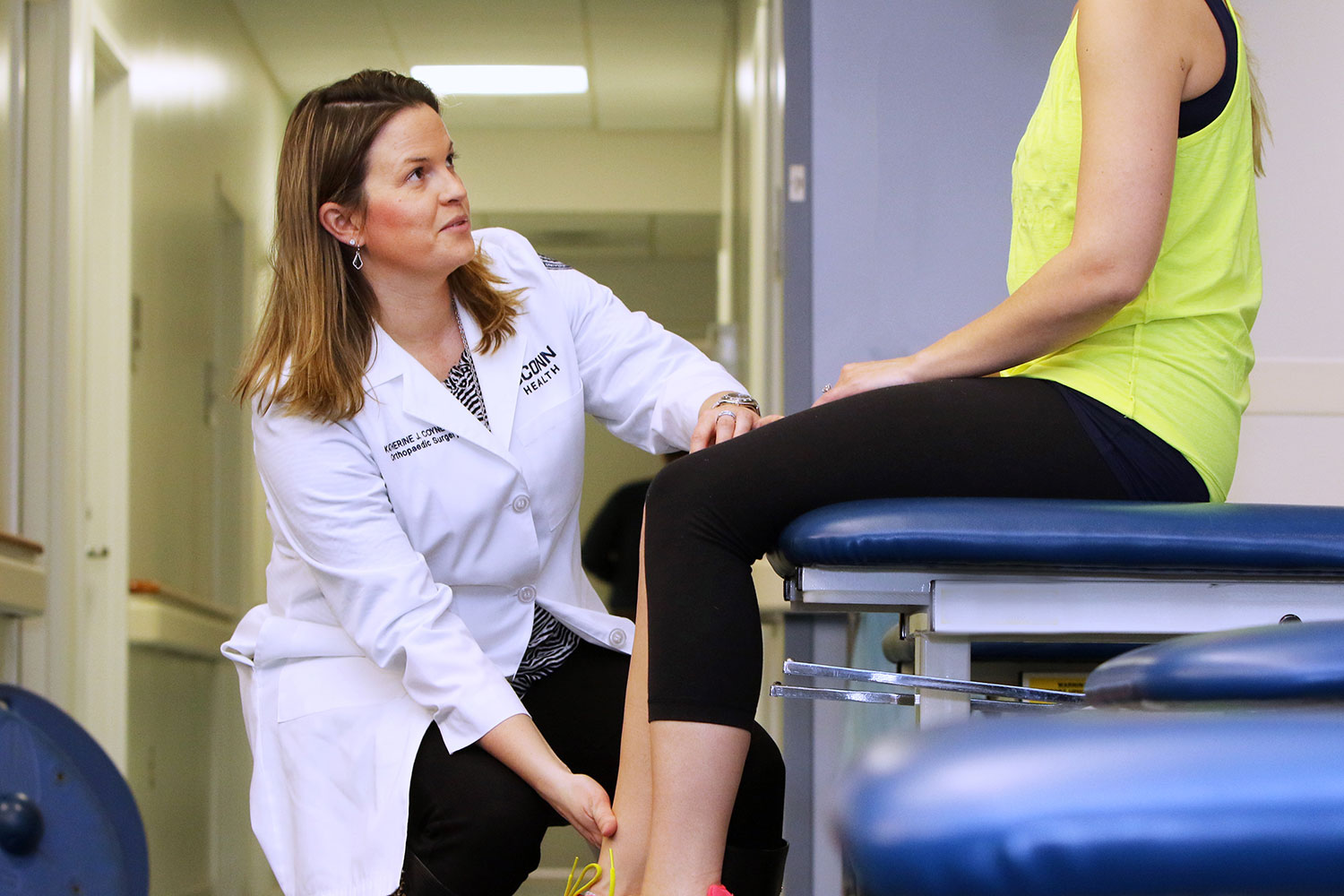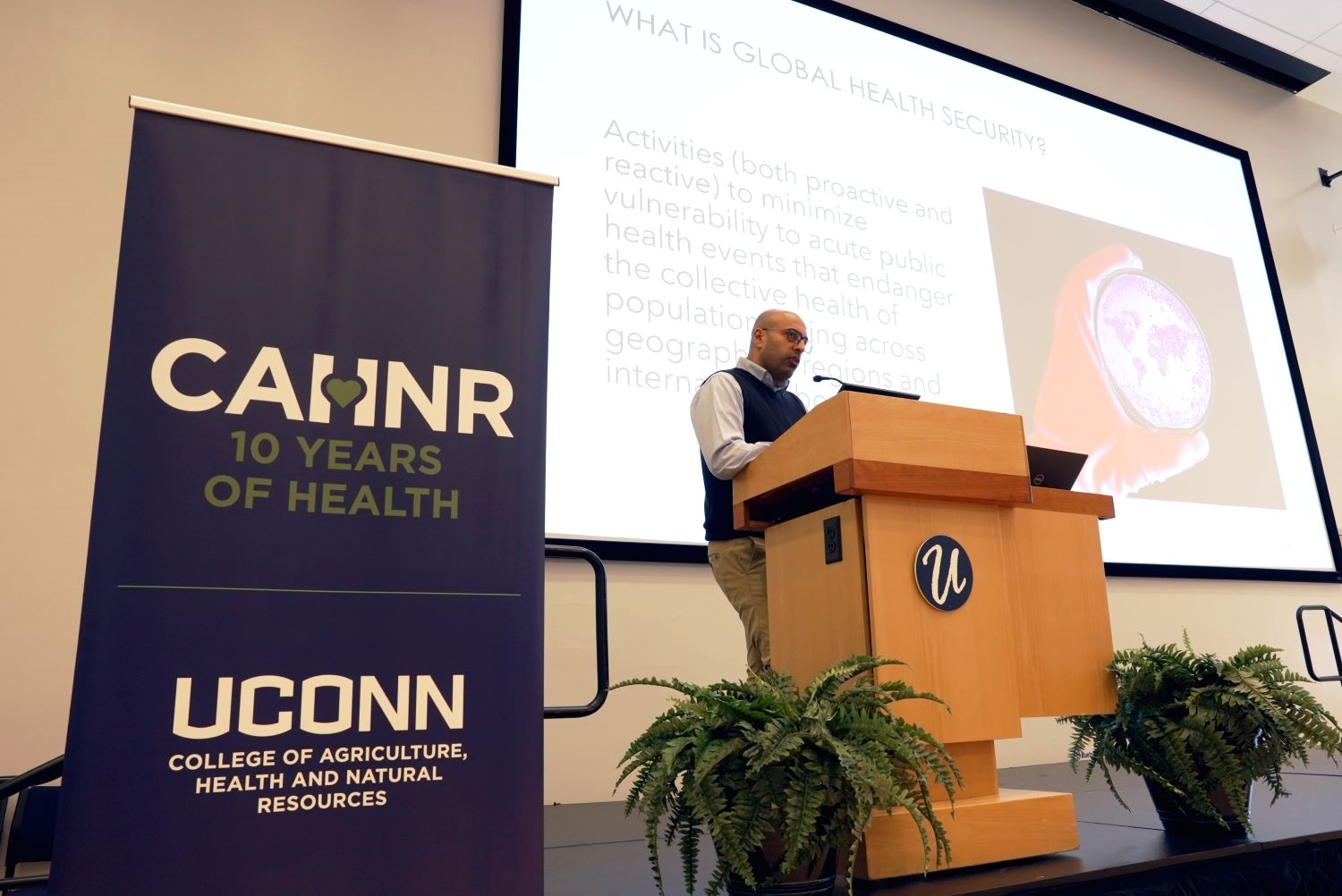
From unraveling the mystery of the country’s earliest occurrences of West Nile encephalitis to conducting a necropsy on the chimpanzee that mauled a woman in Connecticut, residents in the Connecticut Veterinary Medical Diagnostic Laboratory at UConn routinely confront cases that reach nearly every branch of the animal kingdom and can involve high-profile, confidential circumstances.
These individuals, all professionally trained veterinarians, come to UConn with a specific interest in pursuing advanced education in pathology – the study of diseases and their causes. Working alongside UConn faculty, themselves board-certified veterinary pathologists, the residents receive biopsies and conduct necropsies on a highly diverse range of creatures as part of UConn’s residency training program in veterinary pathology.
The program is part of the Department of Pathobiology and Veterinary Science in the College of Agriculture and Natural Resources.
“We’re on the front lines, so to speak,” says Dr. Herbert Van Kruiningen, professor of pathobiology and veterinary science. “If there is a disease that’s introduced deliberately – to damage an agricultural species, for example – we would be the ones to see it.”
According to Dr. Francisco Carvallo, one of UConn’s six current veterinary pathology residents, their cases – which arrive from veterinary hospitals, farmers, government agencies, and pet owners seeking a definitive diagnosis on a companion pet’s unexplained death – deal with “everything that moves that isn’t human.”
Over the course of their training, this handful of residents will handle hundreds of pathology cases, involving dogs, cats, birds, mice, raccoons, foxes, fish, reptiles, and amphibians, as well as livestock such as sheep, chickens, horses, and cattle.
In recent years, residents have had greater opportunity to investigate cases involving aquatic animals like seals, sea turtles, seahorses, and octopi, as well as many species exotic to the United States, submitted by zoos and aquariums nationwide through a mail-in service developed by associate professor Dr. Salvatore Frasca Jr., a veterinary pathologist and 1998 graduate of UConn’s residency program.
“On any given day, we don’t know what we’re going to get,” says Van Kruiningen. “We may get no cases, two cases, or 12 cases. We don’t know if they’re going to be full-size horses or cattle, laboratory rodents, or chickens from a poultry producer. We never know what’s coming.”
For pathology resident Dr. Vanessa Schumacher, the variety of cases she and her fellow residents encounter in the lab offers invaluable experience. “I’m especially interested in aquatic species pathology, and I don’t think there’s any other program besides Sea World that sees the animals we do,” she says.
After three years in the University’s residency program in veterinary pathology – a program with an increasingly prominent reputation – residents will have acquired the solid, hands-on training required to be eligible to take the board exam of the American College of Veterinary Pathologists (ACVP).
This intense, three-day exam remains the single most rigorous examination in veterinary medicine; fewer than half of those who take it pass. Successfully completing it, however, results in professional certification from the ACVP, a prestigious qualification highly coveted by employers across biomedicine, from pharmaceutical and biomedical firms to diagnostic labs, governmental agencies, and colleges of veterinary medicine, all of which, Van Kruiningen says, “want someone who has sound diagnostic skills as a pathologist.”
One other track is available to UConn’s veterinary residents – a concurrent program of veterinary residency and Ph.D. study lasting five to six years, through which residents perform their rotations on the pathology service while taking graduate courses and doing research toward a Ph.D. degree. Those who follow this path leave UConn not only qualified to sit for the board exam, but also with a doctorate in hand.
In addition to tackling their unpredictable caseloads, UConn’s veterinary pathology residents – who hail from as far away as France, Chile, and India, as well as the United States – collaborate on studies published in scientific journals, partnering closely with other researchers across the country, specialists at aquariums and zoos, pathology scholars at universities, and renowned experts in various laboratories around the world.
“We are linked to people all around the country,” Frasca says. “This is a veterinary pathology residency program with international impact.”
Says Van Kruiningen, “We’re seeing new stuff all the time, and we never know the impact. I remind the residents, ‘Sometimes these things look pretty routine, but remember that we’re going to see something new and exciting in the next six months. Pay attention, pay attention, pay attention.’”


